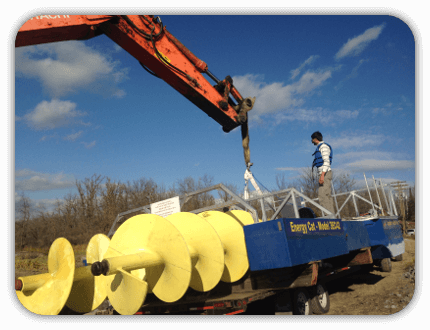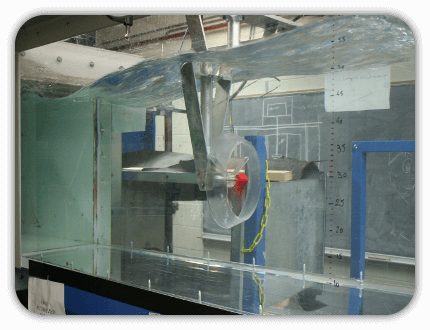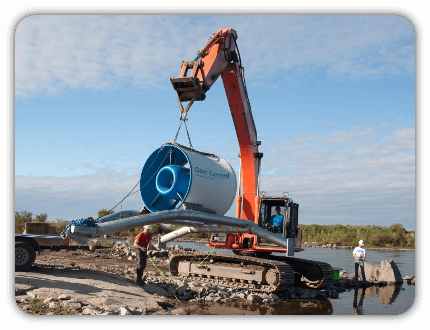-
Testing of New Energy Corporation 5kW and 25kW turbines
-
The CHTTC has worked extensively with New Energy Corporation in different stages of their turbine design. The CHTTC has worked with them to deploy and retrieve different designs of turbines, and has assisted them with monitoring and data collection of deployed units. New Energy Corporation is currently still working with the CHTTC on multiple projects as a result of the collaborative success.

-
-
A numerical examination of positioning and rotation on the performance of two vertical-axis hydrokinetic turbines
-
Numerical simulation allows investigation into the influence of separation distance and rotation on the performance of two vertical-axis hydrokinetic turbines. To understand the effect of separation distance, large-eddy simulation of the flow around side-by-side and staggered cylinders and airfoils is performed. Based upon the simulations, a drag reduction is determined for the downstream cylinder and airfoil. The Reynolds averaged Navier-Stokes method is applied to investigate the influence of separation distance and rotation on two vertical axis hydrokinetic turbines. The numerical simulations showed significant drag reductions for staggered tuebine configurations as the spanwise and streamwise separation distances decreased.
-






